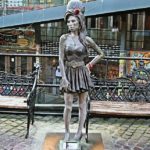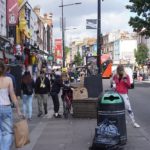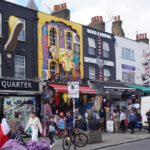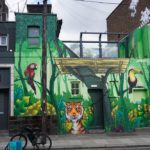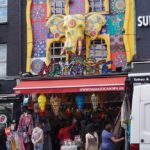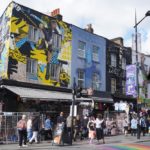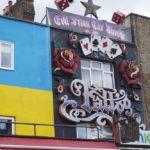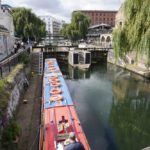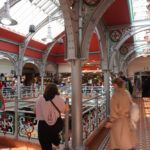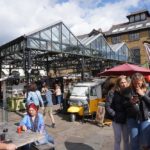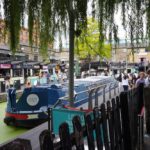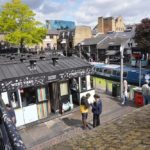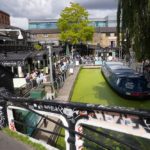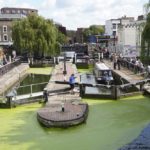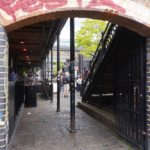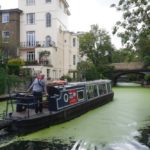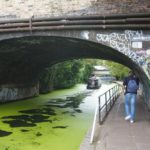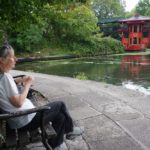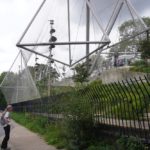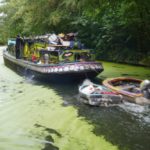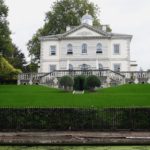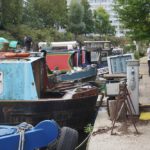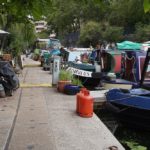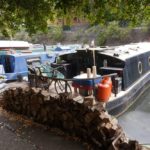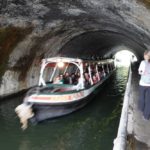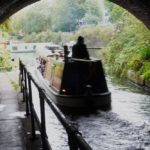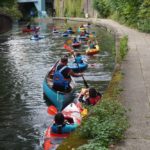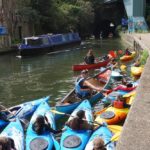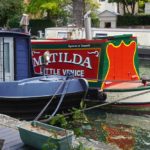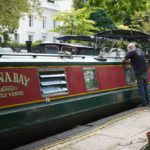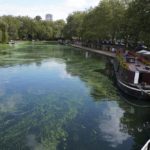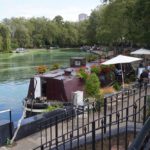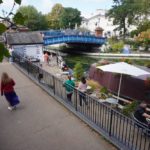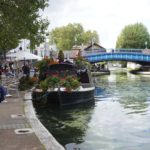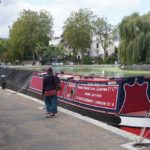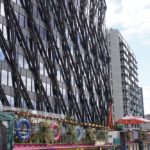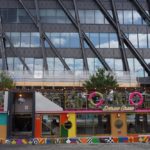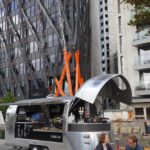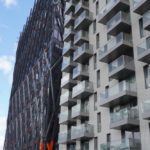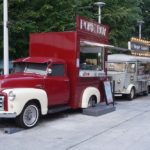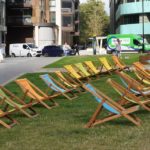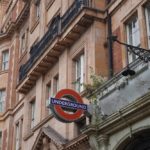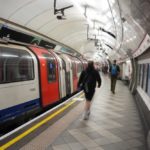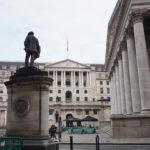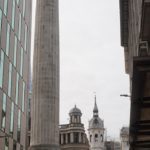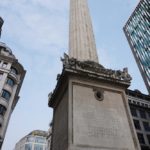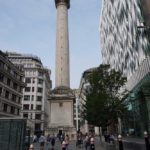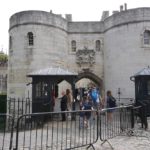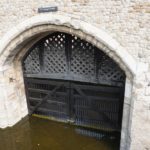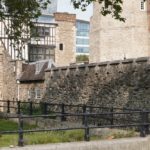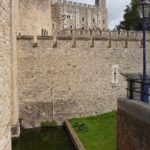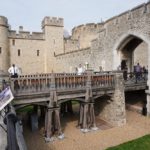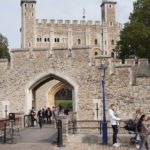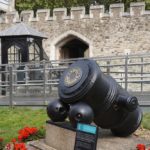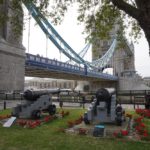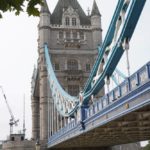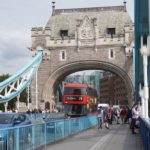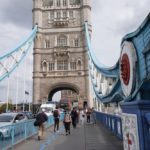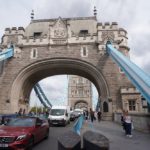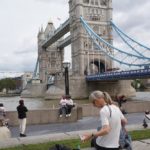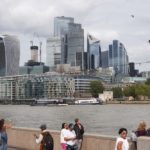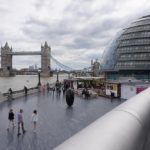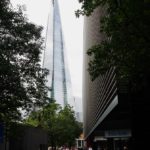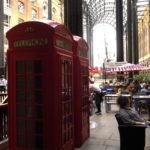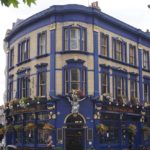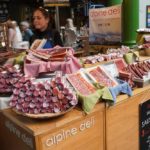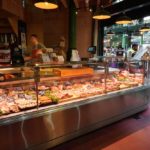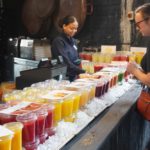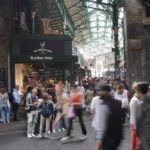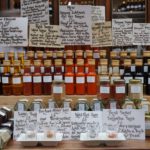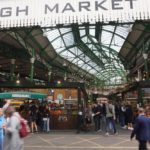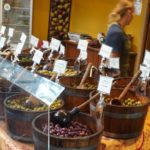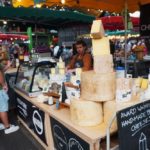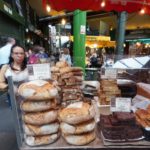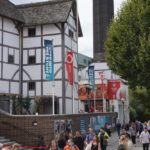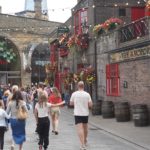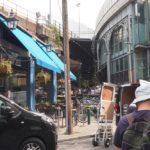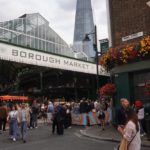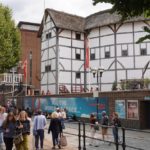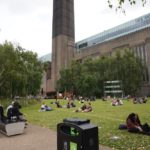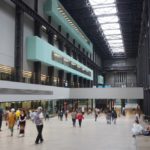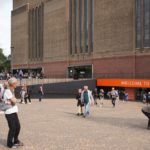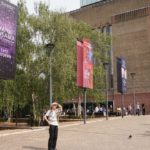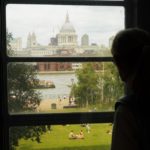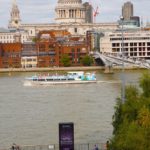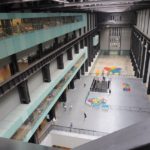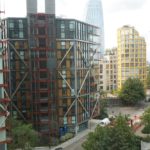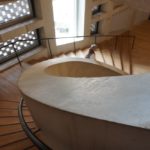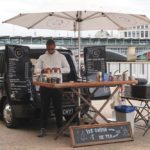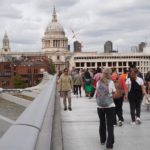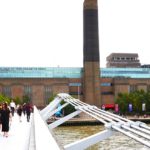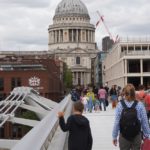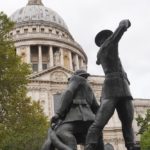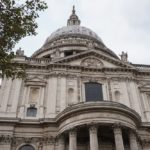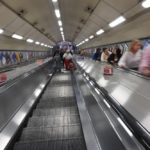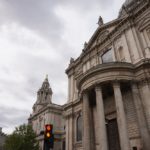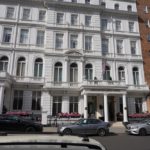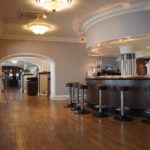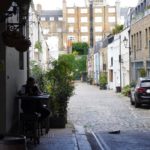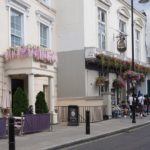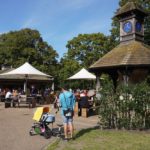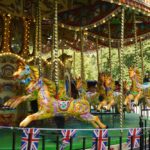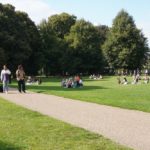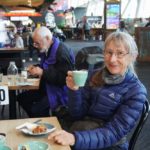Our plan for today was to go by the underground to Camden Town and then walk back along Regent’s Canal to Little Venice and then to Paddington Basin and back to our hotel.
There was no easy route on the underground from our nearest tube station, Queensway, so we decided to walk an easy 15 minutes to Paddington where we could get the Hammersmith or Circle lines to Euston and then change to the Northern line and alight at Camden Town. All went well until we got off at Euston and could not find any connection to the Northern Line. The only tube map we had was the size of an envelope and both of us have marginal eyesight at the best of times. After wandering around dazed and bewildered for a while Barbara asked a young man who was assisting at the turnstiles how to get to Camden. He was very helpful and explained that Euston has two stations, Euston and Euston Square. They are not connected underground. You have to go up to street level, cross a road and go down underground to get on the Northern Line. We were at Euston Square and would have to go to Euston. Apparently everyone except newbie tourists knew this. This would have meant swiping out at Euston Sq and swiping in again at Euston – 2 zone 1 fares. But he suggested the easiest way was to get on the next Circle line tube and go one stop to King’s Cross which had an underground route to the Northern Line. This avoided swiping in and out and was only 1 zone 1 fare. This we did which was fine but the underground walk seemed to be an endless maze going up and down escalators and long twisting tunnels. It all worked out fine and we finally arrived at Camden Town. One good thing about the London Tube is that trains come every few minutes and they move between stations very fast.
Camden is famed for its market and is a hive of counter culture. It is a favourite of tourists, teenagers and punks. It has a thriving counter culture of alternative fashion and music scenes with live music in alt. clubs, traditional pubs and jazz cafes. Many languages are spoken here and there are many different cultures and communities throughout the borough. Many of the stars of tomorrow once started on the stages of Camden’s music venues. The buildings on Camden High Street are all decked out in amazing colour schemes and quirky “added on bits” relating to what ever business is in the building.
Camden has been home to many famous people including John Keats, Charles Dickens, George Bernard Shaw and JB Priestley. More recently Amy Winehouse was big in Camden and by big I mean B I G. There is a stature of her erected by the Town Council.
- Amy Winehouse Statue, Camden
Camden is also on the Regent’s Canal and has its own Camden Lock. It was here we left all the hustle and bustle, noise and music of the High Street and Market and walked the very tranquil and quiet path along the canal to Little Venice. This is a favourite walk of ours as it is so peaceful and seems a world away from the crowds and busyness of London just a few metres beyond the tree lined canal. The canal is still very much used with tourist boats going up and down and canal boat communities living along its length. We also saw a group of school children in kayaks having a lot of fun. It takes just over an hour to walk from Camden Lock to Little Venice but we also sat beside the canal to eat our lunch. The canal also runs through Regent’s Park Zoo with the Snowden (Husband of Princess Margaret, sister of Queen Elizabeth II) aviary at the side of the path. This aviary, built in 1965 was the first zoo walk-through aviary. It is no longer an aviary, it is now Monkey Valley.
Little Venice is an affluent residential area around the junction of the Paddington Arm of the Grand Union Canal, the Regent’s Canal, and the entrance to Paddington Basin. The junction forms a triangular shape basin. It is very pretty and has several cafes and restaurants on canal boats, From here we walked along Paddington Basin which has been redeveloped with modern office blocks and apartments but also with nice outdoor spaces, an outdoor concert venue, boat hire, food trucks, many eateries and seems to be its own thriving community, albeit a very affluent one.
Back at Paddington we bought some groceries at a Tesco Express we remembered form the last time we were in London in 2019. From there we staggered back to our hotel, still not adjusted to the time zone and finding it difficult to sleep when we should at night.
- Camden High Street
- Camden High Street
- Camden High Street
- Camden High Street
- Camden High Street
- Camden High Street
- Camden High Street
- Camden High Street
- Camden High Street
- Camden Lock
- Camden Lock Market
- Camden Lock Market
- Camden Lock Market
- Camden Lock Market
- Camden Lock Market
- Camden Lock
- Camden Lock Market
- Camden Lock Market
- Camden Lock Market
- Camden Lock
- Camden Lock
- Camden Lock Market
- Regent’s Canal
- Regent’s Canal
- Regent’s Canal
- Regent’s Canal, lunch time
- Regent’s Canal, lunch time
- Regent’s Canal Snowden Aviary (now Monkey Valley)
- Regent’s Canal
- Regent’s Canal
- Regent’s Canal
- Regent’s Canal
- Regent’s Canal
- Regent’s Canal
- Regent’s Canal
- Regent’s Canal
- Regent’s Canal
- Regent’s Canal
- Regent’s Canal
- Regent’s Canal
- Regent’s Canal
- Regent’s Canal
- Little Venice
- Grand Union Canal
- Little Venice
- Little Venice
- Little Venice
- Little Venice
- Little Venice
- Paddington bear at Paddington Basin
- Paddington Basin
- Paddington Basin
- Paddington Basin
- Paddington Basin
- Paddington Basin
- Paddington Basin

